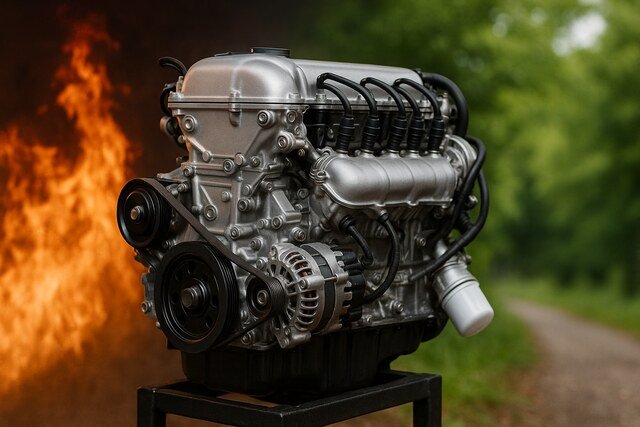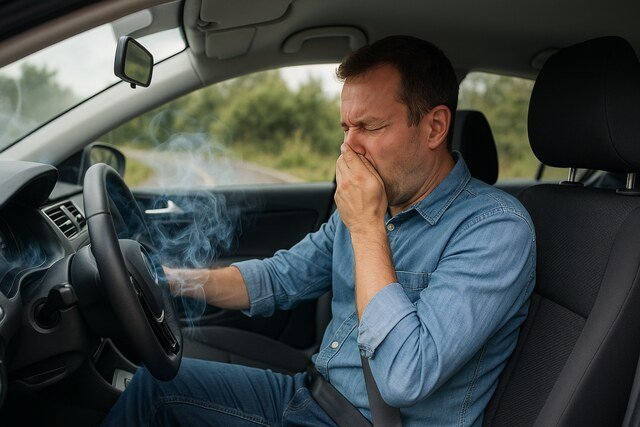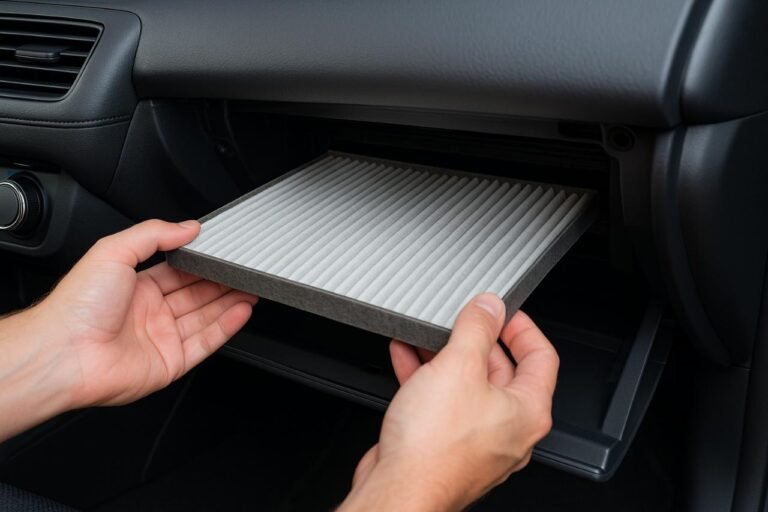Replacing your car’s air filter might seem like a small maintenance task, but it plays a major role in the overall performance, efficiency, and lifespan of your vehicle. Knowing how often to replace the air filter in a car ensures your engine breathes clean air, maintains fuel efficiency, and keeps the air inside your cabin healthy. This guide explains the ideal replacement intervals, the signs of a clogged filter, and how driving habits, environment, and filter type influence the frequency of replacement.
Determine the Recommended Replacement Interval
The most direct way to know how often to replace the air filter in your car is by checking the manufacturer’s maintenance schedule. Each vehicle has a unique air intake system, and the optimal replacement interval is designed around engine airflow needs and local operating conditions.
Most manufacturers recommend replacing the engine air filter every 12,000 to 15,000 miles, or roughly once a year. However, these numbers can vary based on driving conditions and filter material. For example, vehicles driven in urban environments with heavy smog or in dusty rural areas often require more frequent changes.
Following the manufacturer’s maintenance schedule also keeps your car warranty valid and ensures consistent performance. Neglecting timely replacement can lead to restricted airflow, lower fuel economy, and increased engine wear.
Recognize Manufacturer-Specific Variations
Different automakers have different standards for air filter replacement intervals. Toyota may recommend a 15,000-mile interval, while Ford suggests 20,000 miles depending on the model. European cars like BMW or Audi often require replacement every 10,000 to 12,000 miles due to high-performance engines and tighter airflow tolerances.
Adjust Based on Driving Conditions
If you frequently drive on gravel roads, in heavy traffic, or near construction zones, your air filter will clog more quickly. In such conditions, inspect your filter every 6,000 miles and replace it sooner if necessary. Regular inspection ensures that you’re not waiting for the performance to drop before taking action.
Identify the Type of Air Filter in Your Vehicle
Understanding the type of air filter your car uses is crucial for determining replacement frequency. Cars typically have two primary filters: engine air filters and cabin air filters. Each serves a different purpose but requires similar attention.
The engine air filter prevents dust, debris, and contaminants from entering the combustion chamber. On the other hand, the cabin air filter keeps the air inside your vehicle clean by trapping pollen, smog, and allergens. Knowing which type needs replacement and when ensures both your car and your passengers stay in good health.
Engine filters are usually made of paper, foam, or cotton gauze. Cabin filters may include activated carbon layers for odor absorption. The material type directly influences how often replacement is needed.
Engine Air Filter Materials and Lifespan
- Paper filters are inexpensive and effective but require replacement every 12,000–15,000 miles.
- Foam filters are reusable but need cleaning every 5,000–7,000 miles.
- Cotton or high-flow filters can last up to 50,000 miles but require regular cleaning.
Cabin Air Filter Types
- Particle filters trap dust and pollen; replace every 12 months.
- Activated carbon filters absorb gases and odors; replace every 6–9 months.
- Electrostatic filters capture microscopic pollutants; replace annually for best results.
Inspect and Evaluate Your Air Filter Regularly
A simple inspection can help you decide whether to replace your air filter earlier than scheduled. Most air filters are housed in a rectangular or cylindrical plastic casing under the hood, near the engine intake. Checking it regularly can prevent costly repairs and performance drops.
To inspect, remove the housing cover and take out the filter. Hold it up to the light if little or no light passes through, it’s clogged and needs replacement. Dark or greasy deposits, excessive dust, or an oily smell are also warning signs.
Routine inspections are particularly important if your car operates in extreme temperatures or on unpaved roads. These conditions accelerate contamination and reduce filter lifespan.
Signs of a Dirty Air Filter
- Decreased acceleration or engine hesitation
- Reduced fuel efficiency
- Unusual engine noises or sputtering
- Strong fuel odor after ignition
How to Perform a Quick DIY Inspection
- Open your hood and locate the air filter box.
- Release the clips or screws.
- Remove and inspect the filter under good light.
- Compare it with a new one for clarity.
- Replace if it’s visibly dirty or darker than light gray.
Replace the Air Filter Correctly
Replacing the air filter is one of the easiest DIY maintenance tasks for any vehicle owner. It requires minimal tools, usually just a screwdriver or your hands to open the air filter housing. Doing this correctly ensures proper airflow and filter seating.
Start by ensuring your engine is off and cool. Open the air filter box, remove the old filter, and clean out any debris inside the housing. Then insert the new filter in the same orientation as the old one. Close the housing securely to prevent air leaks.
Proper installation is crucial an improperly seated filter can let unfiltered air enter the engine, leading to contamination or even internal damage.
Choosing the Right Replacement Filter
Select an OEM (Original Equipment Manufacturer) or equivalent quality filter that matches your vehicle model. High-performance filters may offer better airflow but are only necessary for certain driving conditions or sports vehicles.
Mistakes to Avoid During Replacement
- Do not install the filter backward; it blocks airflow.
- Avoid reusing disposable paper filters.
- Always clean the air box before inserting a new filter.
- Check for a tight seal to prevent unfiltered air from entering.
Understand the Impact of a Dirty Air Filter
A clogged or dirty air filter restricts airflow, forcing the engine to work harder. This imbalance affects the air-fuel ratio, leading to incomplete combustion, poor mileage, and increased emissions. Over time, this can damage sensitive components such as spark plugs and the catalytic converter
The cabin air filter, if neglected, can reduce HVAC system efficiency and cause unpleasant odors inside the car. It can also exacerbate allergies and respiratory issues for passengers.
Maintaining clean filters improves acceleration, fuel economy, and air quality inside your vehicle. It also prolongs engine life by minimizing internal wear caused by airborne contaminants.
Engine Performance and Efficiency Effects

Tests show that replacing a clogged air filter can improve acceleration by up to 11% and fuel efficiency by 10%. Modern engines rely on accurate airflow data, so even slight restriction affects performance.
Cabin Air Quality and Health Effects

A dirty cabin air filter can reduce airflow by 30–40%, making your defroster and air conditioner less effective. It can also trap moisture, creating a breeding ground for mold and bacteria.
Compare Replacement Costs and Benefits
The cost of replacing air filters is relatively low compared to the benefits they provide. An engine air filter typically costs between $15 and $40, while a cabin air filter ranges from $20 to $60 depending on the material and brand.
DIY replacement is almost free except for the part itself, while professional service may add $20–$50 in labor. However, considering the performance gains, lower emissions, and protection it offers, replacement is one of the most cost-effective maintenance tasks.
Below is a comparison of air filter types and their typical lifespans:
| Filter Type | Average Cost (USD) | Replacement Interval | Notes |
| Paper Engine Filter | $15–$25 | 12,000–15,000 miles | Affordable, disposable |
| Foam Engine Filter | $20–$30 | Clean every 5,000 miles | Reusable with oil treatment |
| Cotton High-Flow Filter | $40–$60 | Up to 50,000 miles | Washable, high performance |
| Cabin Carbon Filter | $25–$50 | Every 6–9 months | Reduces odors and pollutants |
| Electrostatic Cabin Filter | $35–$60 | Every 12 months | Best for allergy protection |
Evaluating Long-Term Savings
Replacing filters regularly can save hundreds of dollars in fuel and repair costs annually. A clean air filter helps your engine run efficiently, reducing unnecessary strain and improving overall lifespan.
Environmental and Economic Impact
Efficient combustion reduces carbon emissions and fuel waste. By maintaining clean filters, drivers contribute to environmental sustainability while keeping operating costs low.
Maintain a Regular Filter Replacement Schedule
Creating a personalized maintenance schedule ensures you never miss a replacement. Combine your filter replacement with oil changes or tire rotations to simplify your car care routine.
Keep a maintenance log or use digital apps that remind you of service intervals. You can even write the date and mileage directly on the filter box as a visual reminder. This proactive approach prevents performance drops and maintains optimal efficiency.
It’s also wise to check both the engine and cabin air filters at the same time neglecting one affects the performance of the other, especially in vehicles with integrated air systems.
Seasonal Maintenance Tips
- Replace before summer to improve A/C performance.
- Replace before winter to ensure proper defogging.
- Inspect after off-road or long-distance trips.
Recommended Replacement Timeline
| Driving Condition | Engine Filter Replacement | Cabin Filter Replacement |
| Normal city driving | Every 12,000–15,000 miles | Every 12 months |
| Dusty/rural conditions | Every 6,000–10,000 miles | Every 6–9 months |
| Heavy traffic or industrial area | Every 8,000 miles | Every 6 months |
Conclusion
Knowing how often to replace the air filter in your car is essential for maintaining both engine performance and air quality inside the cabin. While most vehicles benefit from replacement every 12,000 to 15,000 miles, driving conditions, filter material, and environmental factors can change this schedule. By inspecting regularly, replacing promptly, and maintaining a consistent schedule, you’ll ensure your car remains efficient, clean, and healthy for years to come.
Explore more insightful and valuable content on our blog journalingtechniques! Stay updated with helpful tips, expert advice, and in-depth articles that enhance your knowledge.
FAQ’s
Yes, but it’s not recommended. A dirty air filter reduces engine power, increases fuel consumption, and can damage engine components over time.
The engine air filter cleans air entering the combustion chamber, while the cabin air filter purifies the air circulating inside the vehicle.
Watch for symptoms such as reduced fuel efficiency, slower acceleration, or musty air from vents. Visual inspection is the best confirmation.
Reusable filters, like cotton or foam types, are more expensive upfront but last longer when maintained properly. They are ideal for performance or off-road vehicles.
Yes. A clean air filter improves airflow, helping the engine burn fuel efficiently and boosting gas mileage by up to 10%.
It’s a good practice. Replacing both ensures balanced airflow and consistent vehicle performance, especially during seasonal maintenance.

